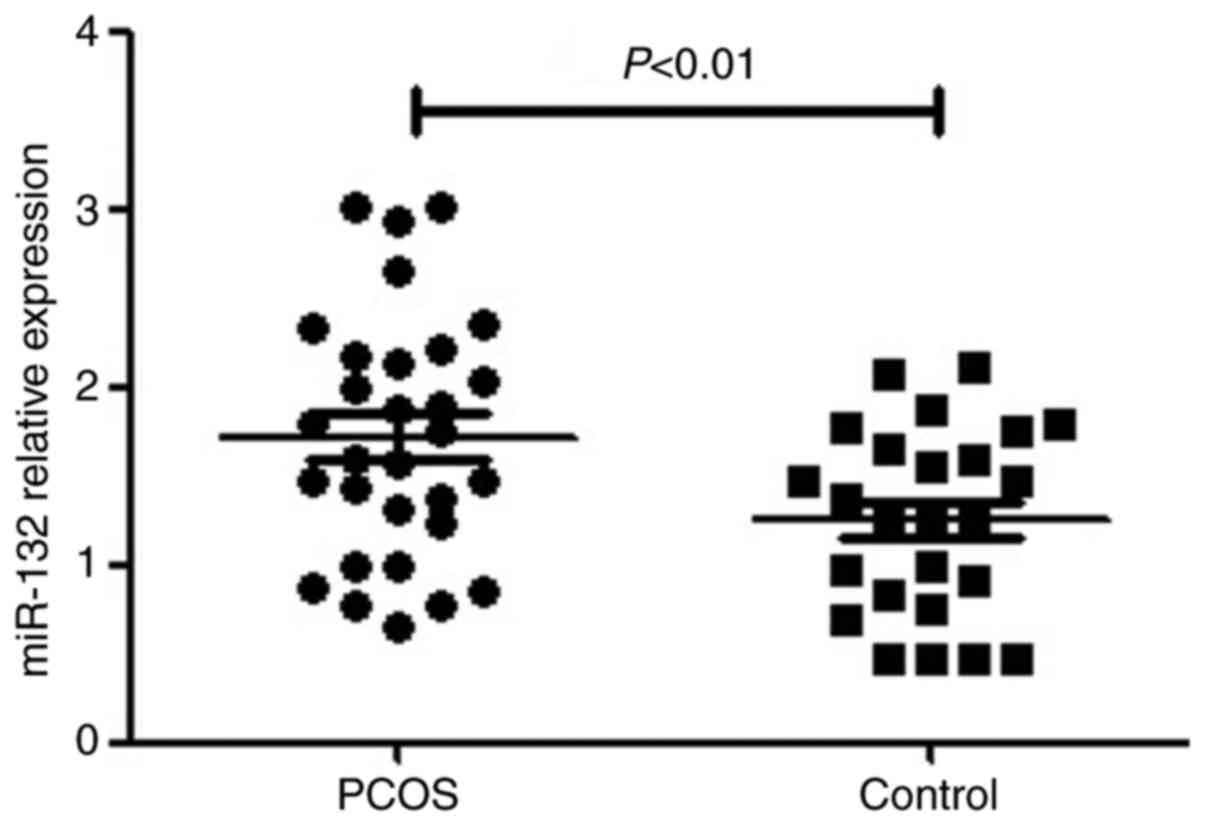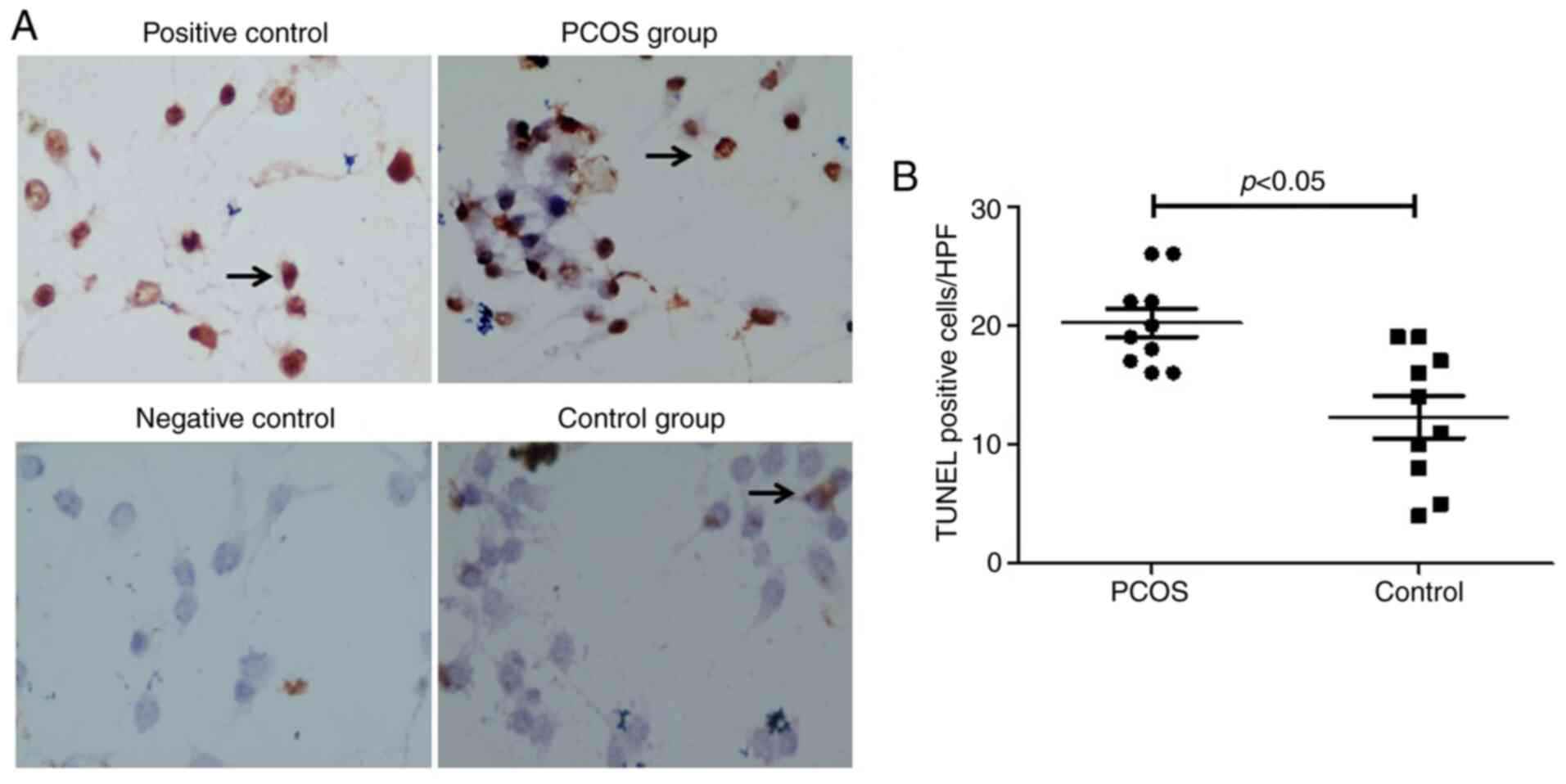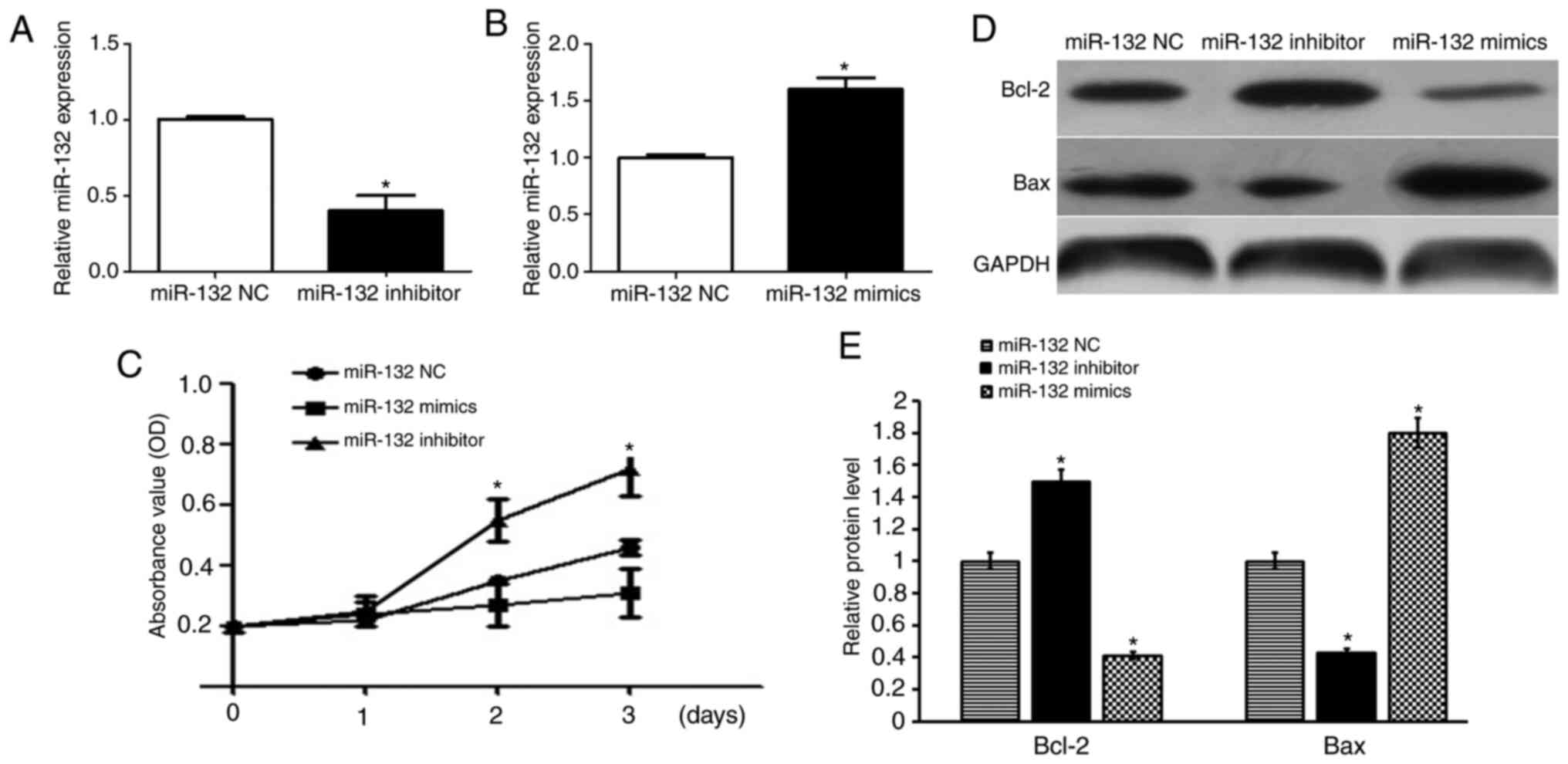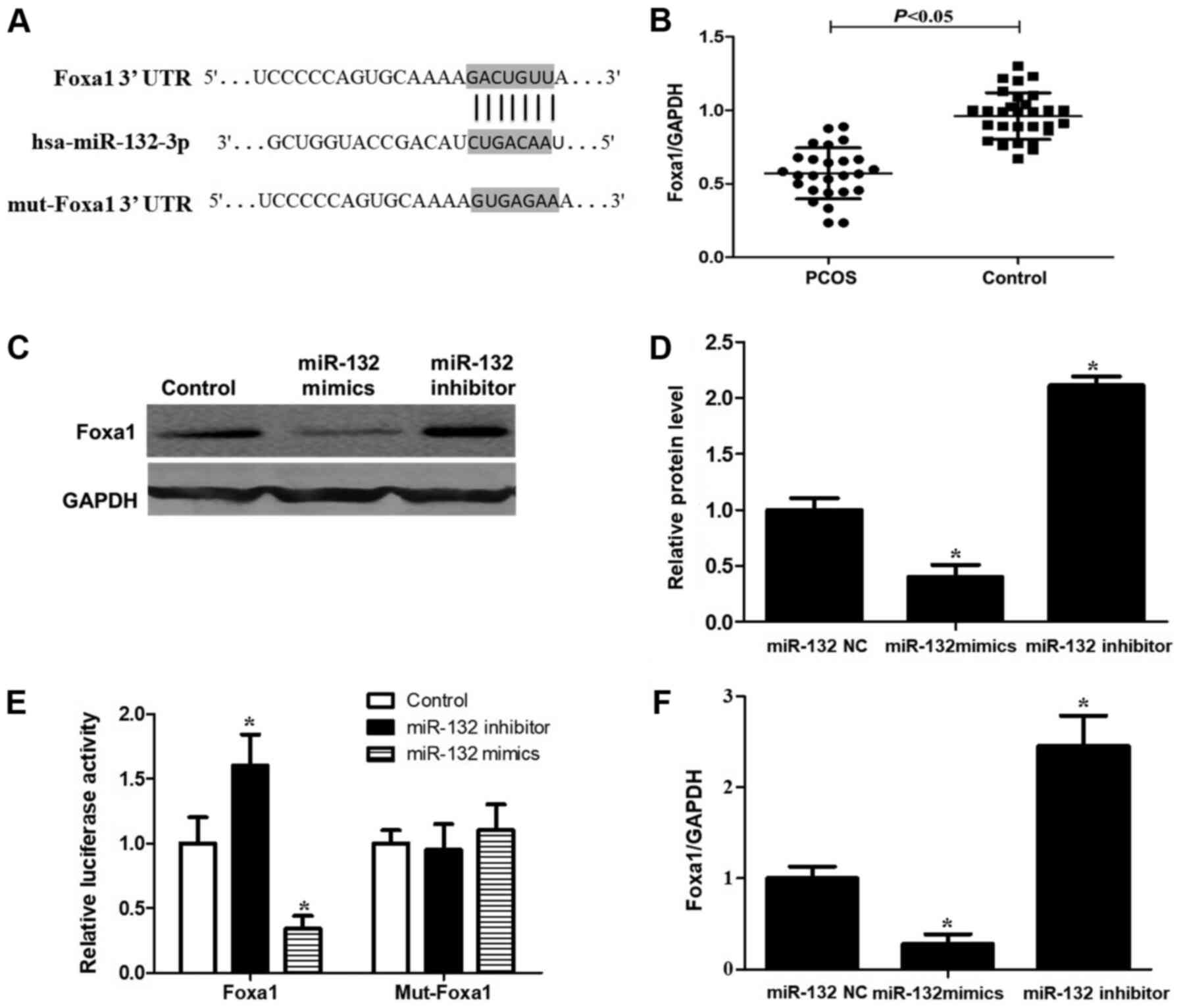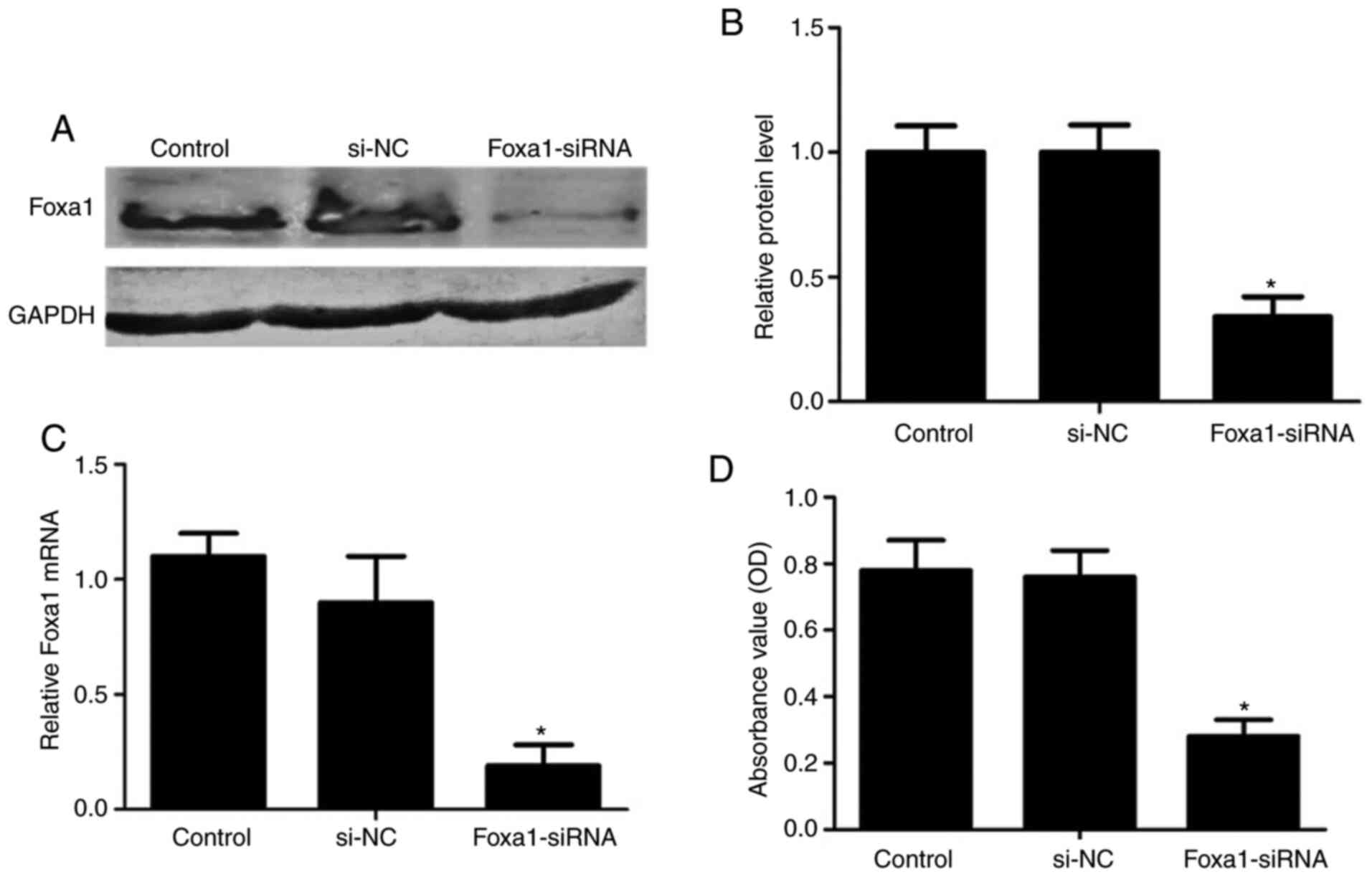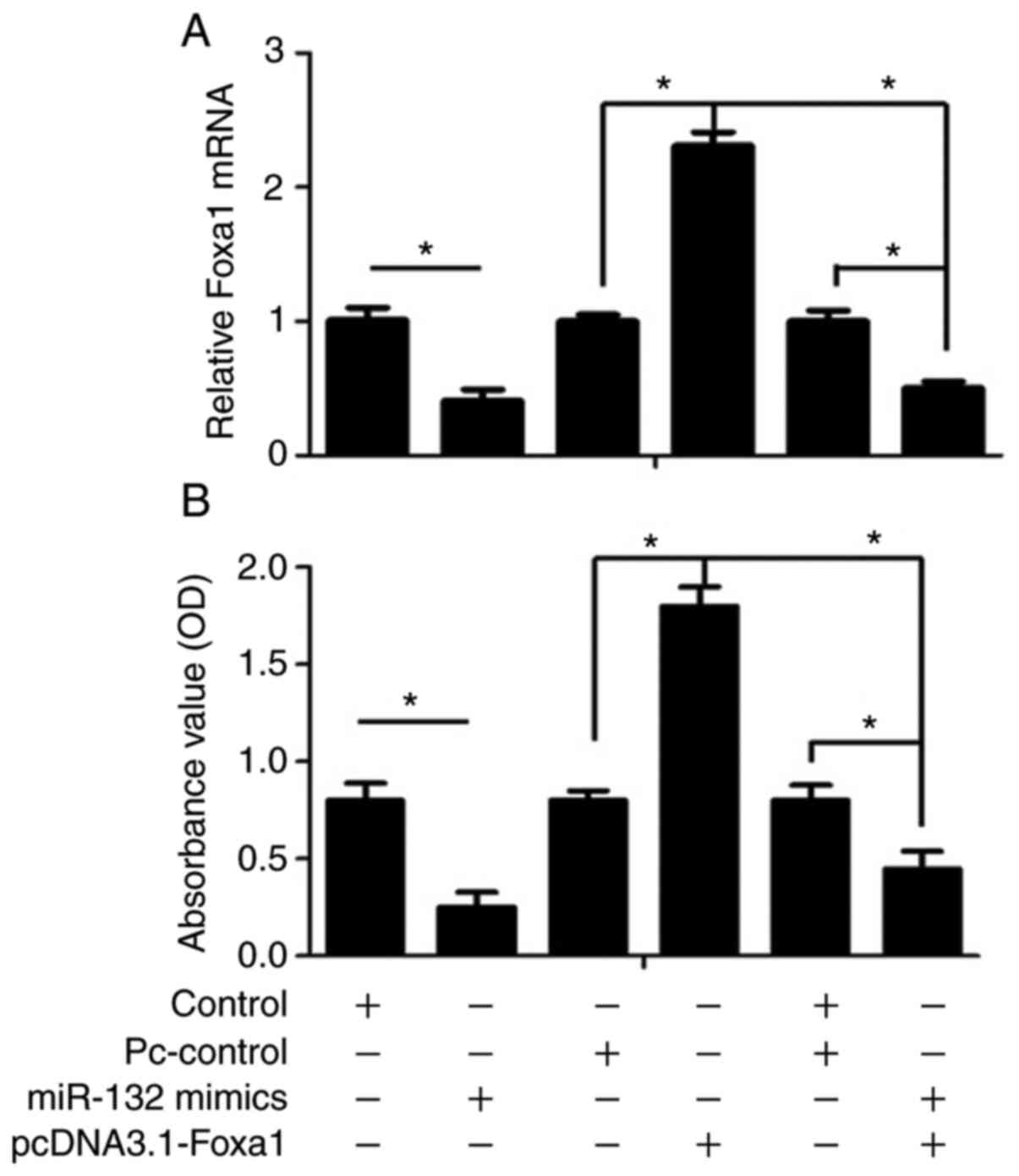|
1
|
Lin J, Huang J, Wang N, Kuang Y and Cai R:
Effects of pre-pregnancy body mass index on pregnancy and perinatal
outcomes in women with PCOS undergoing frozen embryo transfer. BMC
Pregnancy Childbirth. 19:4872019. View Article : Google Scholar : PubMed/NCBI
|
|
2
|
Li S, Qi J, Tao Y, Zhu Q, Huang R, Liao Y,
Yue J, Liu W, Zhao H, Yin H and Sun Y: Elevated levels of
arachidonic acid metabolites in follicular fluid of PCOS patients.
Reproduction. Nov 1–2019.(Epub ahead of print). doi:
10.1530/REP-19-0136.
|
|
3
|
Sagvekar P, Mangoli V, Desai S, Patil A
and Mukherjee S: LINE1 CpG-DNA hypomethylation in granulosa cells
and blood leukocytes is associated with PCOS and related traits. J
Clin Endocrinol Metab. 102:1396–1405. 2017. View Article : Google Scholar : PubMed/NCBI
|
|
4
|
Makrinou E, Drong AW, Christopoulos G,
Lerner A, Chapa-Chorda I, Karaderi T, Lavery S, Hardy K, Lindgren
CM and Franks S: Genome-wide methylation profiling in granulosa
lutein cells of women with polycystic ovary syndrome (PCOS). Mol
Cell Endocrinol. 500:1106112019. View Article : Google Scholar : PubMed/NCBI
|
|
5
|
Qiu X, Wei Y, Liu C, Ding C and Zhao S:
Hyperandrogen enhances apoptosis of human ovarian granulosa cells
via up-regulation and demethylation of PDCD4. Gynecol Endocrinol.
36:333–337. 2019. View Article : Google Scholar : PubMed/NCBI
|
|
6
|
Li Y, Liu YD, Zhou XY, Chen SL, Chen X,
Zhe J, Zhang J, Zhang QY and Chen YX: MiR-29a regulates the
proliferation, aromatase expression, and estradiol biosynthesis of
human granulosa cells in polycystic ovary syndrome. Mol Cell
Endocrinol. 498:1105402019. View Article : Google Scholar : PubMed/NCBI
|
|
7
|
Song Y, Yu G, Xiang Y, Li Y, Wan L and Tan
L: Altered miR-186 and miR-135a contribute to granulosa cell
dysfunction by targeting ESR2: A possible role in polycystic ovary
syndrome. Mol Cell Endocrinol. 494:1104782019. View Article : Google Scholar : PubMed/NCBI
|
|
8
|
Chen B, Xu P, Wang J and Zhang C: The role
of MiRNA in polycystic ovary syndrome (PCOS). Gene. 706:91–96.
2019. View Article : Google Scholar : PubMed/NCBI
|
|
9
|
Wang W, Li X, Ren L, Yuan C, Han Y and
Wang Z: MiR-132 relieves vascular endothelial inflammation and
improve endothelial function in atherosclerosis rats by regulating
SIRT1. Minerva Endocrinol. 45:158–161. 2019.PubMed/NCBI
|
|
10
|
Han Y, Wang F, Shao L, Huang P and Xu Y:
LncRNA TUG1 mediates lipopolysaccharide-induced proliferative
inhibition and apoptosis of human periodontal ligament cells by
sponging miR-132. Acta Biochim Biophys Sin (Shanghai).
51:1208–1215. 2019.PubMed/NCBI
|
|
11
|
Zhou X, Xiang C and Zheng X: miR-132
serves as a diagnostic biomarker in gestational diabetes mellitus
and its regulatory effect on trophoblast cell viability. Diagn
Pathol. 14:1192019. View Article : Google Scholar : PubMed/NCBI
|
|
12
|
Wei XC and Lv ZH: MicroRNA-132 inhibits
migration, invasion and epithelial-mesenchymal transition via
TGFβ1/Smad2 signaling pathway in human bladder cancer. Onco Targets
Ther. 12:5937–5945. 2019. View Article : Google Scholar : PubMed/NCBI
|
|
13
|
Zhang XL, Sun BL, Tian SX, Li L, Zhao YC
and Shi PP: MicroRNA-132 reverses cisplatin resistance and
metastasis in ovarian cancer by the targeted regulation on Bmi-1.
Eur Rev Med Pharmacol Sci. 23:3635–3644. 2019.PubMed/NCBI
|
|
14
|
Wu S, Sun H, Zhang Q, Jiang Y, Fang T, Cui
I, Yan G and Hu Y: MicroRNA-132 promotes estradiol synthesis in
ovarian granulosa cells via translational repression of Nurr1.
Reprod Biol Endocrinol. 13:942015. View Article : Google Scholar : PubMed/NCBI
|
|
15
|
Azziz R: Controversy in clinical
endocrinology: Diagnosis of polycystic ovarian syndrome: The
Rotterdam criteria are premature. J Clin Endocrinol Metab.
91:781–785. 2006. View Article : Google Scholar : PubMed/NCBI
|
|
16
|
Kaur S, Archer KJ, Devi MG, Kriplani A,
Strauss JF III and Singh R: Differential gene expression in
granulosa cells from polycystic ovary syndrome patients with and
without insulin resistance: Identification of susceptibility gene
sets through network analysis. J Clin Endocrinol Metab.
97:E2016–E2021. 2012. View Article : Google Scholar : PubMed/NCBI
|
|
17
|
Livak KJ and Schmittgen TD: Analysis of
relative gene expression data using real-time quantitative PCR and
the 2(-Delta Delta C(T)) method. Methods. 25:402–408. 2001.
View Article : Google Scholar : PubMed/NCBI
|
|
18
|
Li Y, Zhang J, He J, Zhou W, Xiang G and
Xu R: MicroRNA-132 cause apoptosis of glioma cells through blockade
of the SREBP-1c metabolic pathway related to SIRT1. Biomed
Pharmacother. 78:177–184. 2016. View Article : Google Scholar : PubMed/NCBI
|
|
19
|
Mokutani Y, Uemura M, Munakata K, Okuzaki
D, Haraguchi N, Takahashi H, Nishimura J, Hata T, Murata K,
Takemasa I, et al: down-regulation of microrna-132 is associated
with poor prognosis of colorectal cancer. Ann Surg Oncol. 23 (Suppl
5):599–608. 2016. View Article : Google Scholar : PubMed/NCBI
|
|
20
|
Qin J, Ke J, Xu J, Wang F, Zhou Y, Jiang Y
and Wang Z: Downregulation of microRNA-132 by DNA hypermethylation
is associated with cell invasion in colorectal cancer. Onco Targets
Ther. 8:3639–3648. 2015.PubMed/NCBI
|
|
21
|
Liu Y, Li Y, Liu J, Wu Y and Zhu Q:
MicroRNA-132 inhibits cell growth and metastasis in osteosarcoma
cell lines possibly by targeting Sox4. Int J Oncol. 47:1672–1684.
2015. View Article : Google Scholar : PubMed/NCBI
|
|
22
|
Lei CJ, Li L, Gao X, Zhang J, Pan QY, Long
HC, Chen CZ, Ren DF and Zheng G: Hsa-miR-132 inhibits proliferation
of hepatic carcinoma cells by targeting YAP. Cell Biochem Funct.
33:326–333. 2015. View
Article : Google Scholar : PubMed/NCBI
|
|
23
|
Zhang ZG, Chen WX, Wu YH, Liang HF and
Zhang BX: MiR-132 prohibits proliferation, invasion, migration, and
metastasis in breast cancer by targeting HN1. Biochem Biophys Res
Commun. 454:109–114. 2014. View Article : Google Scholar : PubMed/NCBI
|
|
24
|
Renjie W and Haiqian L: MiR-132, miR-15a
and miR-16 synergistically inhibit pituitary tumor cell
proliferation, invasion and migration by targeting Sox5. Cancer
Lett. 356:568–578. 2015. View Article : Google Scholar : PubMed/NCBI
|
|
25
|
Li Y, Zu L, Wang Y, Wang M, Chen P and
Zhou Q: miR-132 inhibits lung cancer cell migration and invasion by
targeting SOX4. J Thorac Dis. 7:1563–1569. 2015.PubMed/NCBI
|
|
26
|
Fiedler SD, Carletti MZ, Hong X and
Christenson LK: Hormonal regulation of MicroRNA expression in
periovulatory mouse mural granulosa cells. Biol Reprod.
79:1030–1037. 2008. View Article : Google Scholar : PubMed/NCBI
|
|
27
|
Fu X, Pereira R, De Angelis C,
Veeraraghavan J, Nanda S, Qin L, Cataldo ML, Sethunath V,
Mehravaran S, Gutierrez C, et al: FOXA1 upregulation promotes
enhancer and transcriptional reprogramming in endocrine-resistant
breast cancer. Proc Natl Acad Sci USA. 116:26823–26834. 2019.
View Article : Google Scholar
|
|
28
|
Jing X, Liang H, Hao C, Hongxia L and Cui
X: Analyses of an epigenetic switch involved in the activation of
pioneer factor FOXA1 leading to the prognostic value of estrogen
receptor and FOXA1 co-expression in breast cancer. Aging.
11:7442–7456. 2019. View Article : Google Scholar : PubMed/NCBI
|
|
29
|
Gou L, Zou H and Li B: Long noncoding RNA
MALAT1 knockdown inhibits progression of anaplastic thyroid
carcinoma by regulating miR-200a-3p/FOXA1. Cancer Biol Ther.
20:1355–1365. 2019. View Article : Google Scholar : PubMed/NCBI
|
|
30
|
Stone L: Different FOXA1 classes drive
prostate cancer. Nat Rev Urol. 16:5082019. View Article : Google Scholar
|
|
31
|
BenAyed-Guerfali D, Dabbeche-Bouricha E,
Ayadi W, Trifa F, Charfi S, Khabir A, Sellami-Boudawara T and
Mokdad-Gargouri R: Association of FOXA1 and EMT markers (Twist1 and
E-cadherin) in breast cancer. Mol Biol Rep. 46:3247–3255. 2019.
View Article : Google Scholar : PubMed/NCBI
|
|
32
|
Wang D, Ren J, Ren H, Fu JL and Yu D:
MicroRNA-132 suppresses cell proliferation in human breast cancer
by directly targeting FOXA1. Acta Pharmacol Sin. 39:124–131. 2018.
View Article : Google Scholar : PubMed/NCBI
|
|
33
|
Chen X, Li M, Zhou H and Zhang L: miR-132
targets FOXA1 and exerts tumor-suppressing functions in thyroid
cancer. Oncol Res. 27:431–437. 2019. View Article : Google Scholar : PubMed/NCBI
|
|
34
|
Li YL, Zhao YG, Chen B and Li XF:
MicroRNA-132 sensitizes nasopharyngeal carcinoma cells to cisplatin
through regulation of forkhead box A1 protein. Pharmazie.
71:715–718. 2016.PubMed/NCBI
|
|
35
|
Sang Q, Yao Z, Wang H, Feng R, Wang H,
Zhao X, Xing Q, Jin L, He L, Wu L and Wang L: Identification of
microRNAs in human follicular fluid: characterization of microRNAs
that govern steroidogenesis in vitro and are associated with
polycystic ovary syndrome in vivo. J Clin Endocrinol Metab.
98:3068–3079. 2013. View Article : Google Scholar : PubMed/NCBI
|
|
36
|
Kranc W, Budna J, Kahan R, Chachuła A,
Bryja A, Ciesiółka S, Borys S, Antosik MP, Bukowska D, Brussow KP,
et al: Molecular basis of growth, proliferation, and
differentiation of mammalian follicular granulosa cells. J Biol
Regul Homeost Agents. 31:1–8. 2017.PubMed/NCBI
|
|
37
|
Thomas FH and Vanderhyden BC:
Oocyte-granulosa cell interactions during mouse follicular
development: Regulation of kit ligand expression and its role in
oocyte growth. Reprod Biol Endocrinol. 4:192006. View Article : Google Scholar : PubMed/NCBI
|















